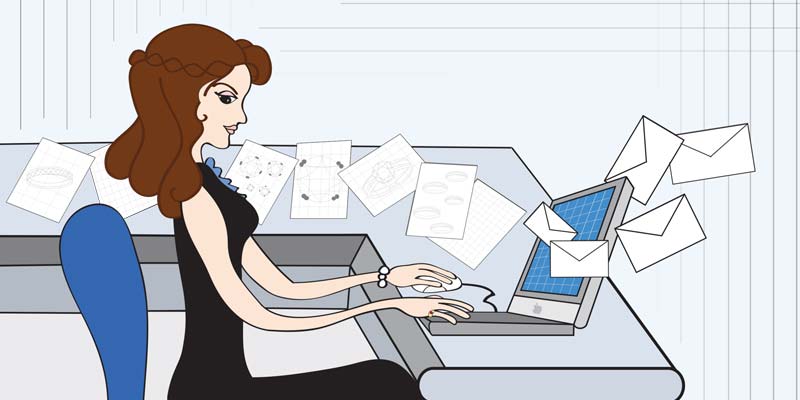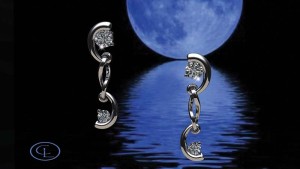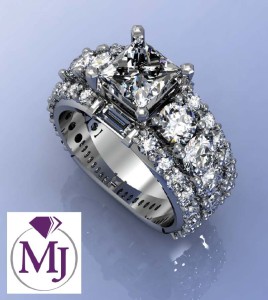World gone CAD: How CAD can help market your store
by charlene_voisin | December 1, 2012 9:00 am
By Shele Letwin
 [1]
[1]
The jewellery industry has changed vastly over the last few years where technology is concerned. Laser welders can make the trickiest repair jobs less so, machines can grow gem-quality diamonds, and advanced instruments are better able to spot treatments.
More and more, jewellers are embracing computer-assisted design (CAD), using it for everything from custom work to putting the designer’s cap on consumers and letting them piece together the elements of their own ring. It is also gaining ground as a means to market your store and designs.
Let’s look at a few real-life examples of how fellow jewellers have put CAD to good use.
Creative creations
 [2]
[2]Luc Laframboise, owner of Créations Lucas in Ottawa, has been e-mailing CAD-produced renders to clients for more than seven years. A goldsmith/retailer in the trendy ‘ByWard Market’ area of town, Laframboise is adamant about creating unique designs for his clients, rather than simply following the lead of others who create more predictable styles or even selling a brand-name product.
To get his work in front of clients on a regular basis, he renders his designs in CAD. All jewellery CAD software has what is referred to as a ‘render’ package that takes the finished model and creates a photo-realistic image. Some programs have advanced tools that create what looks to be a real-life piece of jewellery. To maximize the impact of his renders on viewers, Laframboise uses background scenes that highlight a piece’s metal and diamonds. He also incorporates a logo created in Photoshop into each render. Once a month, he sends out an e-mail blast of his latest work.
The marketing technique is working for him—last year was his best year ever, he says. Compared to paying for professional photography on an ongoing basis, CAD can be a lower-cost approach to help deliver your designs to an audience already familiar with your store and jewellery.
The moral of this lesson? Be creative in how you use the technology you may already have. And start collecting e-mail addresses. It’s true some people may not want to give you that information, but explain you’d be honoured to let them be among the first to see your latest designs. Don’t let a ‘no’ stop you from increasing your business.
Pick and choose
 [3]
[3]Some might argue operating without a website these days is akin to standing outside your store and directing clients to your competition. My 20-year-old nieces won’t even visit a store until they’ve checked out its website. I have to admit, I am doing it as well. Lack of time and an aversion to fighting traffic has me clicking.
For many businesses, a website is the first impression visitors—read potential clients—have of you. As such, great images are critical to conveying professionalism. As many of you know, jewellery is one of the most difficult items to photograph well. Metal is shiny and reflects everything around it, while inclusions are not something you want to highlight. You could buy the most expensive camera, but you will likely need a professional lightbox to take print-quality photos. While it may be worth the investment, if you don’t know how to photograph jewellery or how to retouch the images you manage to capture, you might be doing yourself a great disservice. Think of the last time you looked up a store online. Did do-it-yourself photography put you in the mood to shop?
Just like the previous example, CAD-produced renders are one option to help create an attractive website. But what if you want to set up an online retail presence in say, personalized jewellery.
Tony Davis of www.jewlr.com[4] in Toronto knew nothing about the jewellery industry, but a lot about creating a website that didn’t turn users off. His first foray into online jewellery sales began with a selection of real-life images that resulted in moving 1000 rings during Christmas 2009. Inspired by his success, Davis knew if he could come up with his own unique designs, he could boost his sales. A few months later, he invested in CAD, hired a few freelance designers, and doubled his sales by the following Christmas.
Briefly, the website allows users to customize a piece of jewellery by picking their preferred metal and gemstones, as well as adding engraving. The chosen elements adjust onscreen, providing the user with an image of the end result. The metal and gemstone combinations are too many to count without doing some serious math, but let’s look at this from a practical perspective. How many different versions of the same piece do you carry in your store?
A picture is worth a thousand words
 [5]
[5]Mark Magee of Magee Jewellers and Designers in Fredericton does well with bridal shows. Yes, one could argue that after the happy couple has picked out the engagement and wedding rings, your job is done. That kind of thinking will keep you from growing your business. A happy customer is a repeat customer, and over the course of a lifetime, what with birthdays, anniversaries, and other festive occasions, you could be looking at a substantial amount of money. Now consider the fact many people who go to bridal shows don’t come alone. With bridesmaids, friends, or families in tow, your own potential client is providing you with several others.
To attract people to his booth, Magee holds a draw for a $1000 gift certificate toward the purchase of wedding bands. To qualify, brides provide their work e-mail addresses, while Magee uses a 3-D scanner to create an image of their engagement rings. The device turns the image into a 3-D mesh (i.e. a representation of curves and surfaces), which is then imported into CAD to use as a model to create a matching wedding band perfectly fitted to the engagement ring. It can be a real time saver, which in turn, means the client saves money.
Although scanners can start in the $3000 range, Magee’s cost $22,000. The drawback to less expensive models is they do not work well on reflective surfaces. Magee says the higher cost is worth it to him, since the scanner he uses handles reflections better; it also comes with a spray to ‘dull’ the metal without harming the piece. Since so much of his business is bridal, Magee says the scanner has paid for itself several times over.
You’ll note earlier Magee is specific about getting a work e-mail address. This is important, as he wants to create the opportunity for a show-and-tell of sorts—once the bride opens the e-mail, her first impulse will be to share it with her co-workers, or as Magee sees it, a new pool of potential clients. In case you’re wondering, every rendering includes Magee Jewellers’ logo. Some designers would never consider letting a custom design leave the store without a deposit, but Magee believes the payoff outweighs other considerations. He made more than 90 wedding bands one year using this marketing technique. And that does not include some of the custom jobs he picked up from brides’ co-workers.
In addition to these three examples, CAD renderings are, in essence, a virtual inventory, helping to free up cash flow to be put to more productive uses. Like any piece of equipment, CAD software is an investment, as is the training required to operate it. However, the amount of future sales it can generate can be worth it, both in custom work and lower-cost marketing ideas.
Shele Letwin is president of GV Design Canada, the authorized Canadian distributor of Gemvision and Envision Tec products. She is a graduate of the jewellery arts program at George Brown College, an award-winning designer, and CAD/CAM instructor. Letwin is often a guest speaker at trade shows and at the Gemvision Design Symposium. She can be reached via e-mail at shele@gvdesigncanada.com[6] or (866) 299-1702.
- [Image]: http://www.jewellerybusiness.com/wp-content/uploads/2012/12/Opener.jpg
- [Image]: http://www.jewellerybusiness.com/wp-content/uploads/2012/12/dia-earring-drops2-copy.jpg
- [Image]: http://www.jewellerybusiness.com/wp-content/uploads/2012/12/mark.jpg
- www.jewlr.com: http://www.jewlr.com
- [Image]: http://www.jewellerybusiness.com/wp-content/uploads/2012/12/Pic3.jpg
- shele@gvdesigncanada.com: mailto:shele@gvdesigncanada.com
Source URL: https://www.jewellerybusiness.com/features/world-gone-cad-how-cad-can-help-market-your-store/